It is overland tour to Mt. Wudangshan in Hubei province from Xian. Hubei province is located in mid China connecting many provinces in China by convenient transportation of railway, cruise, and flights......
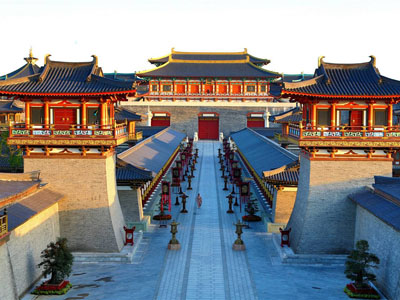
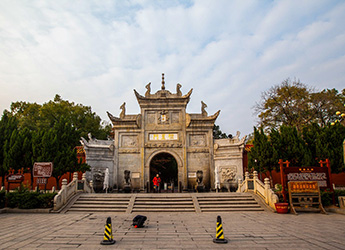 The Great Temple on the Southern Sacred Mountain (Nanyue Damiao ) is situated in the north of Nanyue County at the foot of Mt. Hengshan in Hengyang city, Hunan province. This temple enshrines the spirit of Mt. Hengshan, the Great Emperor of the Southern Sacred Mountain (Nanyue Dadi ). The year of its first construction is unknown.
The Great Temple on the Southern Sacred Mountain (Nanyue Damiao ) is situated in the north of Nanyue County at the foot of Mt. Hengshan in Hengyang city, Hunan province. This temple enshrines the spirit of Mt. Hengshan, the Great Emperor of the Southern Sacred Mountain (Nanyue Dadi ). The year of its first construction is unknown.
According to the Excerpts of Records about the Southern Sacred Mountain (nanyue xiaolu) by Li Chongzhao of the Tang dynasty, on Mt. Hengshan there had originally been Zhu Rong's Temple, which stood at the top of Zhu Rong Peak, and in the Sui dynasty, it was moved to the foot of the mountain. According to the Records of the Southern Sacred Mountain (nanyue zhi), in the early Tang dynasty, King Huo's Hall was built inside the temple; in the ninth year of the Kaiyuan era (721), Emperor Xuanzong granted upon the spirit of the Southern Sacred Mountain the title "King Who Governs Heaven ( Sitian Wang ) ", in the thirteenth year (725), the Perfect Sovereign's Shrine ( Zhenjun Ci ) was also built in the temple, and the back hall was built in the fifth year of the Dazhong-Xiangfu era in the Song dynasty (1012).
After several reconstructions and expansions, the temple's scale was gradually enlarged. The extant buildings on the Southern Sacred Mountain were reconstructed in the eighth year in the Guangxu era of the Qing dynasty (1882). There are altogether nine rows of halls from the south to the north. The first row is the Lingxing Gate, a four-poled, three-storied, imitation wood-structured stone memorial archway. The second row is the Kuixing Pavilion, which is commonly called the Wreathing Dragon Pavilion, a name acquired because of a woodcarving of a wreathing dragon placed in the sunk panel of the stage on the second floor. The third row comprises the Main Southern Gate, which is made up of three semicircular arches and shaped as the character "chuan" (that is why the gate is also called the Main Chuan Gate), and the eastern and western chuan gates on both sides. The fourth row is the Pavilion of the Imperial Tablet, where a tablet on which is erected the inscription Reconstructing the Temple on the Southern Sacred Mountain by Emperor Kangxi of the Qing dynasty. The fifth row is the Fine Reception Gate, which comprises seven bays and features single-layer eaves and a hipped gable roof. In history it was the ceremonial gate where guests were greeted. 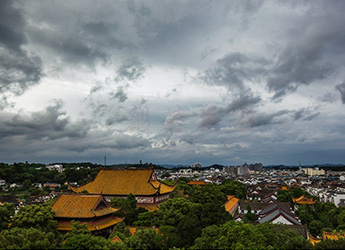 The sixth is the Tower of Imperial Books, which used to conserve seven imperial horizontal inscribed boards, funeral orations and prayer texts of past dynasties, and the tablet recording the titles conferred to the mountain spirits, etc. Regrettably, these valuable historical relics were all destroyed in the catastrophe of the "Great Cultural Revolution". The Tower of Imperial Books is now an exhibition place, which mainly exhibits over 200 valuable cultural relics unearthed and conserved round the Southern Sacred Mountain. The seventh row is the main hall of the temple, the Saintly Emperor's Hall. There stand inside and outside the hall altogether 72 steles that represent the 72 peaks of Mt. Hengshan.
The sixth is the Tower of Imperial Books, which used to conserve seven imperial horizontal inscribed boards, funeral orations and prayer texts of past dynasties, and the tablet recording the titles conferred to the mountain spirits, etc. Regrettably, these valuable historical relics were all destroyed in the catastrophe of the "Great Cultural Revolution". The Tower of Imperial Books is now an exhibition place, which mainly exhibits over 200 valuable cultural relics unearthed and conserved round the Southern Sacred Mountain. The seventh row is the main hall of the temple, the Saintly Emperor's Hall. There stand inside and outside the hall altogether 72 steles that represent the 72 peaks of Mt. Hengshan.
Enshrined in the center of the hall is the Southern Sacred Mountain Emperor Who Governs Heaven and Displays Saintliness ( Nanyue Sitian Zhaosheng Di ), i.e., the Fire Spirit ( Huoshen ) Zhu Rong. The stone railings around the hall are inlayed with more than 100 double-faced white marble reliefs. The eighth row is the Sleeping Hall, which is also called the back hall. The Great Emperor of the Southern Sacred Mountain and his wife Empress Jingming's statues in sitting posture are set in the divine throne in the hall. The last row is the Northern Back Gate, which comprises three bays and features single-layer eaves. On the east side of the gate is the Hall of Instilling Life, while on the west is the Hall of Governing Spirit. Eight Daoist temples and eight Buddhist temples stand respectively on the east and the west of the temple. It is extremely rare that the same temple embraces both Buddhism and Daoism.

It is overland tour to Mt. Wudangshan in Hubei province from Xian. Hubei province is located in mid China connecting many provinces in China by convenient transportation of railway, cruise, and flights......
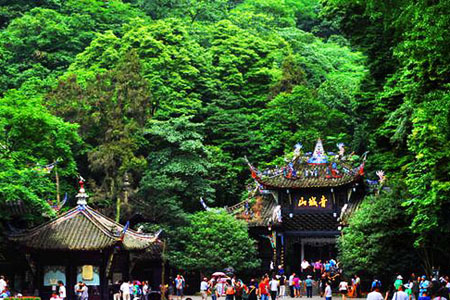
One day classic tours of Chengdu to Mt. Qingchengshan and Dujiangyan Dam will show tourist the profound of ancient Chinese wisdom and culture in harmony relation with the world. ......
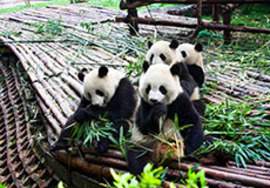
The most classic one day Chengdu tours will bring tourist to Chengdu Giant panda garden and Leshan giant buddha with private travel guide and car in Chengdu, extremely convenient and easy!......
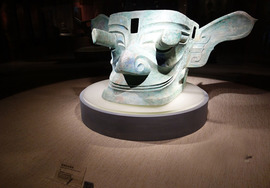
One days best Chengdu tours bring tourist to Sanxingdui museum and giant panda garden with private guide and car, making your tour in Chengdu easy. ......
This panda volunteer work provide tourist with one days unique experience of Panda volunteer project works and bring them an intimate touch with Giant pandas, also the best way to learn deep about pand......
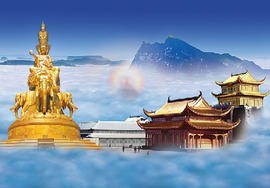
It is tour from the only one operator in Chengdu tours market offering Emeishan and Leshan tours by bullet train. Our highlights including Leshan Giant Buddha and Mt Emeishan. ......

